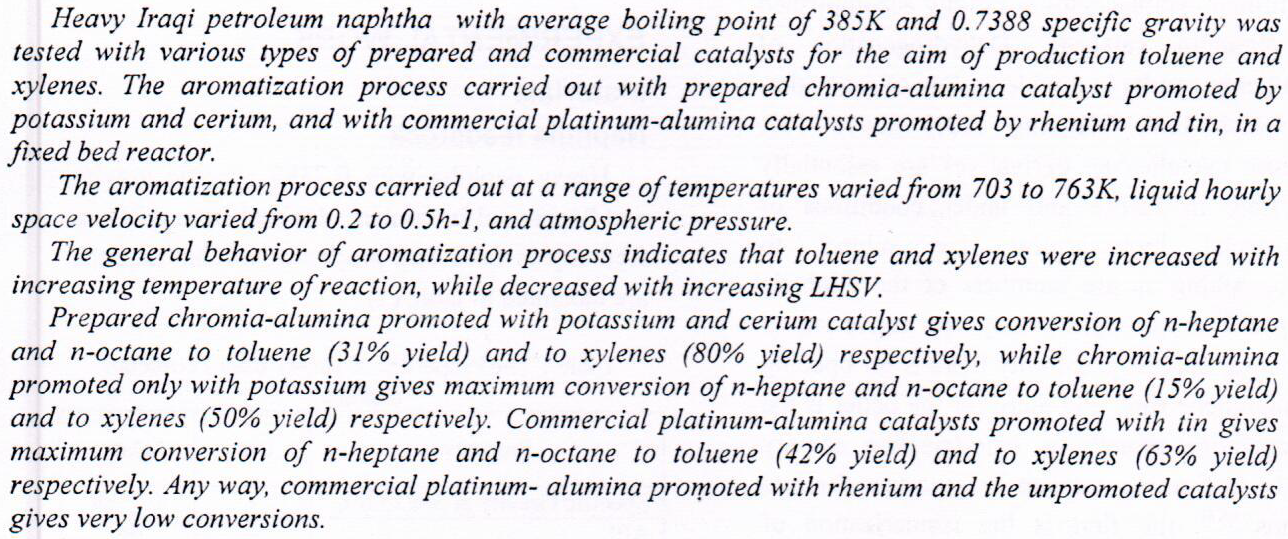
Carbon fibre reinforced polymers are widely used to strengthen steel structural elements. These structural elements are normally subjected to static, dynamic and fatigue loadings during their life-time. A number of studies have focused on the characteristics of CFRP sheets bonded to steel members under static, dynamic and fatigue loadings. However, there is a gap in understanding the bonding behaviour between CFRP laminates and steel members under impact loading. This paper shows the effect of different load rates from quasi-static to 300 × 103 mm/min on this bond. Two types of CFRP laminate, CFK 150/2000 and CFK 200/2000, were used to strengthen steel joints using Araldite 420 epoxy. The results show a significant bond strength enhancemen
... Show More (73)
(73)
 (61)
(61)
The electrical performance of bottom-gate/top source-drain contact for p-channel organic field-effect transistors (OFETs) using poly(3-hexylthiophene) (P3HT) as an active semiconductor layer with two different gate dielectric materials, Polyvinylpyrrolidone (PVP) and Hafnium oxide (HfO2), is investigated in this work. The output and transfer characteristics were studied for HfO2, PVP and HfO2/PVP as organic gate insulator layer. Both characteristics show a high drain current at the gate dielectric HfO2/PVP equal to -0.0031A and -0.0015A for output and transfer characteristics respectively, this can be attributed to the increasing of the dielectric capacitance. Transcondactance characteristics also studied for the three organic mater
... Show More (5)
(5)
 (3)
(3)
Abstract: Under high-excitation irradiance conditions to induce fluorescence, the dependence of photobleaching of Coumarin 307 (C307) and acriflavine (ACF) laser dyes in liquid and solid phases have been studied. A cw LD laser source of 1 mW and 407 nm wavelength was used as an exciting source. For one hour exposure time, it was found that the solid dye samples suffer photobleaching more than the liquid dye samples. This is because in liquid solutions the dye molecules can circulate during the irradiation, while the photobleaching is a serious problem when the dye is incorporated into solid matrix and cannot circulate.
The aim of the current study is to in evaluate the role of SOD activity in the previously reported oxidative stress in our laboratory(1), in the patients with different brain tumors. SOD activity was assayed according to riboflavin/NBT method and its specific activity was calculated in patients with benign and malignant brain tumors and control. Moreover the specific activity was compared in these samples according to gender and the occurrence of disease.Non significant elevation (P > 0.05) in SOD specific activity was observed in tissue of malignant tumors in comparison to that of in benign brain tumors. While a highly significant decrease (P < 0.001) of the specific activity was found in sera of malignant patients group in comparison to t
... Show More (58)
(58)
The relation between the output power and wavelengths for a 532nm 3W frequency doubled diode pumped solid state laser pumped Ti:Sapphire crystal is investigated. A 20 femtosecond pulse at 800 nm is obtained. A 320 mW is found to be the highest power at 800nm. Below this wavelength value and above the power was found to deviate from highest output value.
Molecularly imprinted polymers (MIPs) are an effective method for separating enantiomeric compounds. The main objective of this research is to synthesize D-arabinitol MIPs, which can selectively separate D-arabinitol and its potential application to differentiate it from its enantiomer compound through a non-covalent approach. A macroporous polymer was synthesized using D-arabinitol as a template, acrylamide as a functional monomer, ethylene glycol dimethacrylate (EGDMA) being a cross-linker, dimethylsulfoxide (DMSO) being a porogen, as well as benzoyl peroxide being an initiator. After polymer synthesis, D-arabinitol was removed by a mixture of methanol and acetic acid (4:1, v/v). Fourier-Transform Infrared spectroscopy (FT-IR) and Scan
... Show More (3)
(3)
 (1)
(1)
